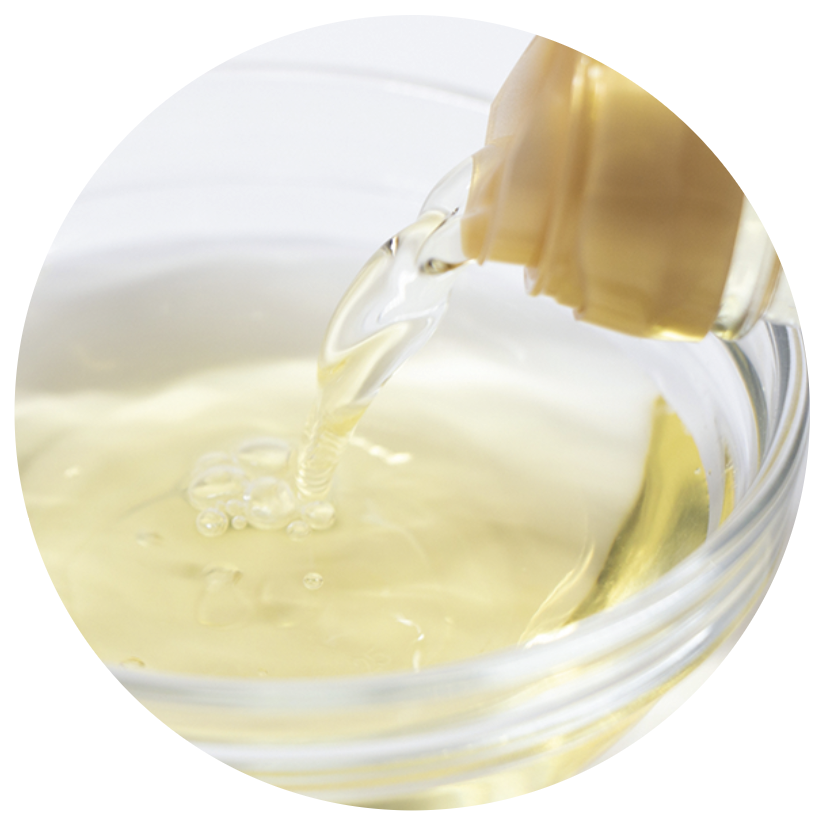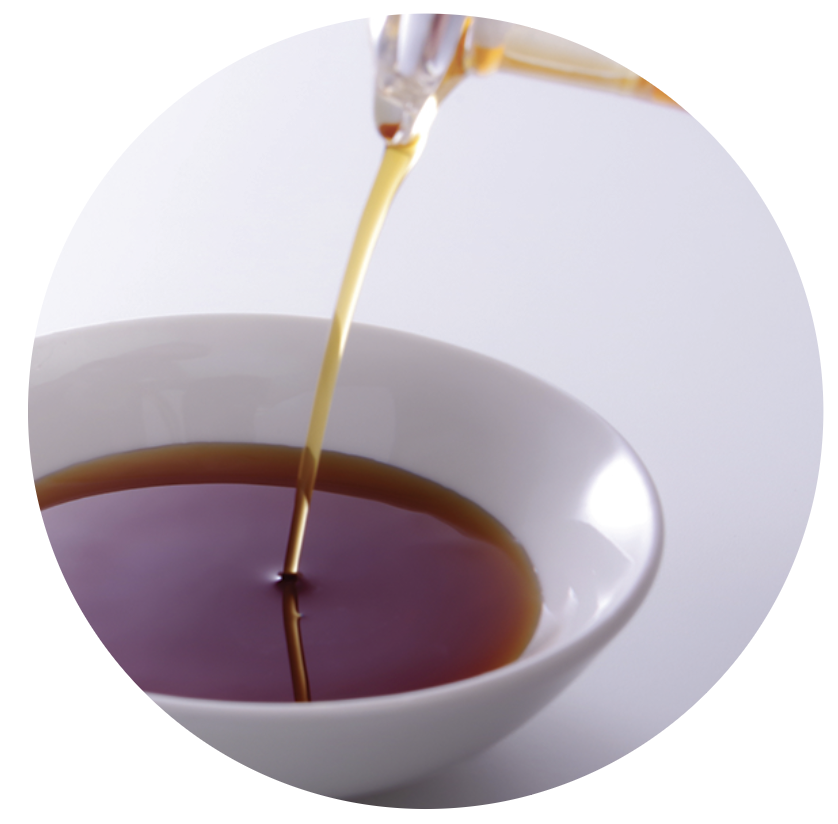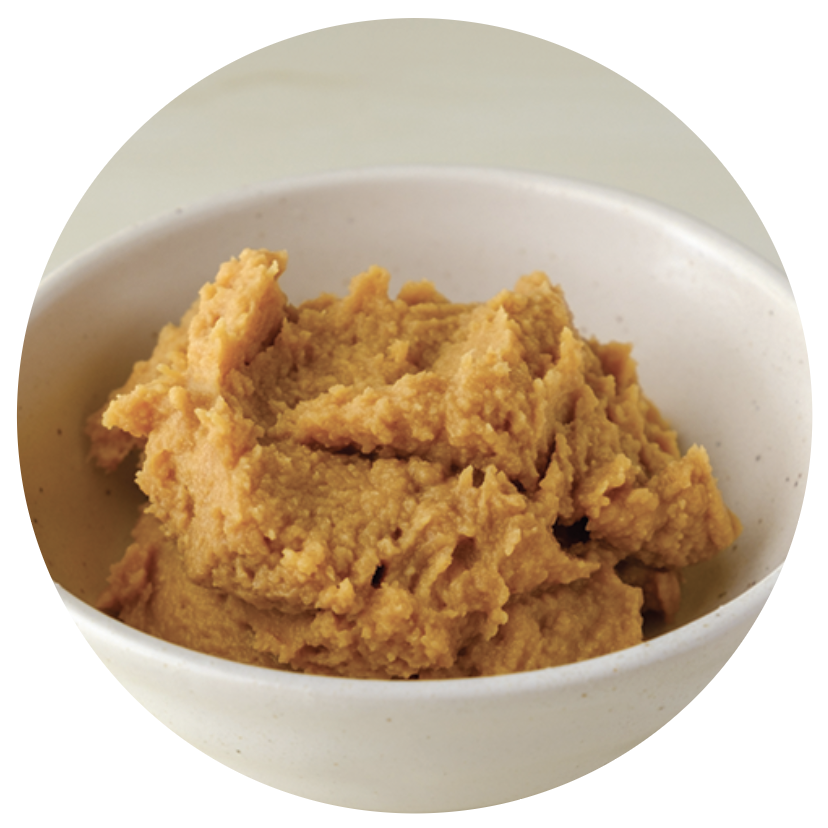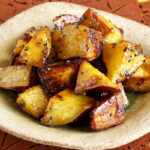
『Japanese Home Cooking Trivia』
.
.
.
MARCH 2022

.
.
Japanese Cooking Must Haves Seasonings
“さ し す せ そ” -sa, shi, su, se, so
“ さ し す せ そ ” (sa – shi – su – se – so)
The most basic seasonings for traditional Japanese cuisine are Sugar, Salt, Vinegar, Soy Sauce, and Miso. You can remember this with Sa-Shi-Su-Se-So, which is the “s” row of the Japanese phonetic alphabet. This also represents the order the ingredients should be used when cooking. Sugar should be added first because it needs to sit for a while in order to bring out the sweetness in foods. Salt should be added second to extract water from each ingredient, which determines the taste of the dish. Sour flavors are lost quickly, so vinegar should be added next; then, soy sauce and miso for the last added touch of flavor. Along with these five seasonings, Sake and Mirin also play important roles in traditional Japanese dishes.
.
Sa: Sato (Sugar)
Sugar is an essential ingredient, not only for sweet deserts, but also for a variety of cooking to deepen the taste of different foods. Many vegetable dishes, such as pumpkin, eggplant, and satoimo (aroid) use a good amount of sugar.
.
Shi: Shio (Salt)
Almost all Japanese recipes include the use of salt to enhance flavors. “Shio shoushou (a little salt)” is a canned phrase on many Japanese cooking shows.
.

Su: Su (Vinegar)
Veggies like cucumber, onion, and radish as well as seafood like octopus, codfish, and seaweed marinated in vinegar are called sunomono. It is known for being healthy and helps prevent catching colds. Sushi rice is also made by mixing short grain rice with sweetened vinegar.
.

Se: Shoyu (Soy Sauce)
Soy sauce is used for a wide variety of cooking produced by soybeans, flour, and salt. Every Japanese house has some type of soy sauce in the refrigerator and on the table – it is the king of all seasoning. You can marinate meat and fish, stir fry veggies and rice, or pickle veggies using soy sauce. It also smells and tastes amazing when cooked together with butter.
.

So: Miso (Soybean Paste)
Made from soybeans, miso is well known for its nutrition. Drinking a cup of miso soup every morning like Madonna will keep you healthy and young.
.
● Cooking Sake
Sake brings out the flavor in dishes. It also tempers the strong aroma of meats and seafood, eliminates germs, and helps tenderize meat.
.
● Mirin (sweet cooking rice wine)
Mirin is yellow rice wine containing 40% – 50% sugar and 14% of alcohol. It also tempers the strong aroma of meats and fish, helps ingredients maintain a firm texture, and burnishes and sweetens teriyaki. There is also a mirin-like seasoning with less than 1% alcohol.
.
● Ponzu Sauce (soy sauce with citrus juice)
Ponzu is citrus-based sauce using juice from lemon, lime, sour orange, or yuzu. Ponzu-shoyu (ponzu with soy sauce) is used as dipping sauce for many dishes such as shabu-shabu, gyoza, yu-dofu, and chicken hot pot. Adding grated radish and chopped onion is a tasteful idea to give a refreshing touch to any meat or seafood dish or enjoy it as a healthy salad dressing.
.
● Brown Sauce (Worcester sauce, medium thick sauce, thick sauce)
When you say “sauce” in Japan, it generally means “brown sauce,” fermented liquid condiment made from vegetable puree and fruit juice mixed with salt, sugar, vinegar, and other spices. It is a must item for okonomiyaki, takoyaki, and pan-fried noodles and also goes well with deep-fried food such as tonkatsu (pork cutlet) and fried shrimp. You can mix it with ketchup and mayonnaise and try adding new ingredients to make your own original sauce.
.
● Dashi (soup stock)
Made from dried bonito, dried sardine, kelp or/and shiitake mushroom, dashi is the most fundamental broth for Japanese cuisine used for miso soup, soba, udon and all kinds of hot pot. You can cook rice and your favorite veggies and chicken with dashi instead of water for seasonal mixed rice. Homemade dashi is the best, but you can save time and buy instant dashi powders which are sold at any Japanese market.
.
Ichiju-Sansai 一汁三菜

.
As an effort to reduce the ever-increasing number of lifestyle diseases, during the 1970s the “ideal meal” was calculated and promoted in the US. Ideally, the majority of your caloric intake should come from carbohydrates instead of fat. It was soon discovered that the calculated “ideal meal” closely resembled the traditional Japanese meal. Attention was therefore drawn to the most common Japanese meal known as ichijū-sansai (一汁三菜; “one soup, three sides”). Now people from around the world are eager to learn about Japanese food and Japanese ingredients that are vital for maintaining health. Read on to find out more about how you can incorporate ichijū-sansai into your lifestyle as well.
Ichijū-sansai is a traditional Japanese meal which consists of soup, rice, and three side dishes, each employing a different cooking technique. Rice provides energy in the form of carbohydrates, soup helps keeps the body hydrated, and the side dishes provides a balanced portion of other essential minerals and nutrients. For each of the side dishes, it is important for cooking methods and ingredients not to overlap. When you alternate between different foods, different nutrients are allowed to mix together in the stomach. This improves the digestion and absorption of these nutrients and helps flush out excess sugar, salt, and fat. The three side dishes usually include a main protein dish which can be meat, fish, tofu, or egg, as well as a vegetable dish that is rich in fiber, vitamins, and minerals, such as seaweed, beans, mushrooms, and potatoes.
.
5 Colors on Your Plate
When you prepare your meal, check if you see five colors. An ideal meal should contain five colors: white/brown, green, yellow/orange, red/pink, and blue/purple. The best way to get all of the vitamins, minerals and nutrients you need is to eat a variety of colorful fruits and vegetables.
.
.
.
.
.
.





One Reply to “【TRIVIA】Recipe and Japanese Home Cooking”
Comments are closed.